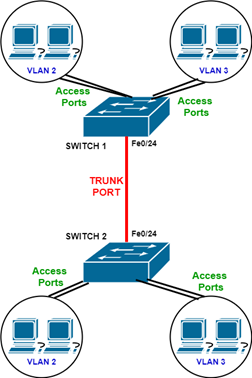Still confused about the difference between Access and Trunk? Come and check it out!
Good evening, my friends! Today we are going to talk about port types - Access and Trunk. In daily network operations, these two port mode is the most used, because they directly determine the data flow between switches in the way, if you do not know Access and Trunk, then the VLAN configuration can be a mess.
If you want to get more information, scan the QR code below to contact customer service.

01 Difference between Access port and Trunk port
1. Access port (access port) Access ports are typically used to connect terminal devices, such as PCs, printers, or IP phones。It is characterized by:
·Can only belong to one VLAN.
·Only data frames that belong to the VLAN are forwarded.
·Generally configured in the interface to connect the terminal, the exchange machine will remove the VLAN label when sending data, so that the terminal device can correctly receive.
2. Trunk port (trunk port) Trunk port is generally used for interconnection between switches, and can also be connected to VLAN-enabled servers or wireless APs。It is characterized by:
·Data frames that can carry multiple VLANs.
·By 802.1Q orISL (Huawei generally uses 802.1Q) for VLAN marking.
·When forwarding data, the switch carries a VLAN tag to identify which VLAN the data frame belongs to.
02 Application scenarios for Access and Trunk ports

·Access port : commonly used to connect PC , server , printer and other ordinary terminal equipment .
·Trunk port: Used for interconnecting switches, or connecting devices that support VLANs (such as wirelessAP) 。
03 Configuration of Access and Trunk ports
On a Huawei switch, you can configure it with the following commands:
1.Configure the Access port

2.Configure a Trunk port

3.Allow all VLANs to pass through the trunk port

04 How to tell if a port is Access or Trunk?
You can use the following command to see the port's working mode:

Or view the VLAN configuration of all ports:

05 Common troubleshooting
1. Terminal can't get IP address?
·Check that the port is correctly configured as Access and is bound to the correct VLAN.
·use display vlanEnsure that the VLAN exists and that the DHCP server is available within that VLAN.
2. Is VLAN data inaccessible between switches? 、
Make sure that the Trunk port has allowed the relevant VLAN to pass through. use display interfaceCheck if the port mode is Trunk. That's the end of today's sharing. We'll see you next time!
For more Switch port types resources, follow the Facebook account&youtube account: Thinkmo Dumps


